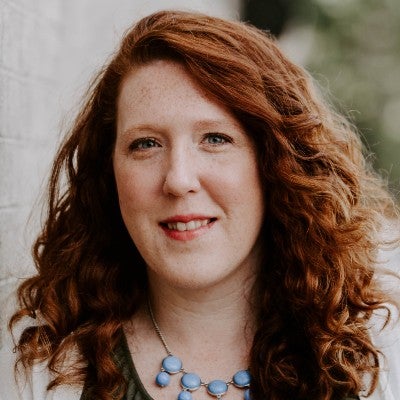Homeowners insurance isn’t a one-size-fits-all product. Though a standard homeowners insurance policy (HO-3) is the most common type of coverage, there are several other types of home insurance designed to meet the specific needs of various homeowners, including those who own condos or older homes and homeowners who prefer a cheaper policy with limited coverage.
Understanding the differences between these policy forms can help you choose the right type and level of protection for your property.
HO-1 (Basic Form)
An HO-1 insurance policy, also known as a basic form, is considered the most basic form of homeowners insurance. It generally only offers coverage for your dwelling (Coverage A) or the structure of your home and other structures (Coverage B) on your property, such as a detached garage. It does not include personal property coverage.
Coverage is limited to the following named perils, or those mentioned explicitly in the policy document:
-
Fire and lightning
-
Smoke
-
Hail and windstorms (in most states)
-
Theft
-
Explosions
-
Malicious mischief or vandalism
-
Riots or civil commotion
-
Volcanic eruptions
-
Damage from aircraft
-
Damage from vehicles
When a covered event occurs, claim payouts reflect the actual cash value, which accounts for depreciation. As such, a claim payout may not cover the current cost of materials and labor.
HO-2 (Broad form)
An HO-2 insurance policy provides broader coverage than an HO-1. Instead of limited coverage for the dwelling or other structures, an HO-2 policy includes coverage for your personal property (Coverage C), loss of use (Coverage D), personal liability (Coverage E), and third-party medical payments (Coverage F).
An HO-2 is still a named peril policy, but in addition to the 10 perils listed above, this type of policy also includes coverage for damage caused by
-
Falling objects
-
The weight of ice and snow
-
Accidental water discharge
HO-3 (Special form)
Also known as a standard home insurance policy, the HO-3 policy is the most common type of home insurance purchased. It includes all the coverages offered by an HO-2, including personal property, liability, and loss of use.
However, policies include open peril coverage for your dwelling and other structures, meaning your property is covered against all perils except those specifically excluded from the policy.
Personal property coverage is generally limited to 16 named perils, including:
-
Fire or lightning
-
Hail or windstorms
-
Explosions
-
Riots or civil commotion
-
Damage from aircrafts
-
Damage from vehicles
-
Smoke
-
Malicious mischief or vandalism
-
Volcanic eruptions
-
Falling objects
-
Weight of ice, snow, or sleet
-
Accidental discharge of water or steam
-
Sudden and accidental tearing apart, cracking, burning, or bulging of certain household systems
-
Freezing of household systems
-
Sudden and accidental damage from artificially generated electrical current, or a power surge.
Though coverage can vary by policy, state, and insurer, HO-3 policy exclusions typically include damage caused by flooding, water backups from sewers and sump pumps, earthquakes, and sinkholes.
HO-4 (Tenant’s insurance)
An HO-4 policy is also known as renters insurance. It does not provide coverage for the property's structure, but it provides financial protection if the tenant experiences a property loss due to 16 named perils, including fire, theft, accidental water overflow, vandalism, and smoke.
This type of coverage also typically includes liability protection as well as additional living expenses (ALE) coverage if the property becomes uninhabitable due to a covered loss.
HO-5 (Comprehensive form)
An HO-5 policy offers the most robust level of protection for single-family homeowners and is often popular for high-value properties or among homeowners looking for the most comprehensive level of protection.
Policies provide open peril coverage for personal property in addition to the dwelling and other structures typically offered by an HO-3. Like an HO-3, this type of policy also includes loss of use coverage, liability insurance, and medical payments coverage.
HO-6 (Condominium insurance)
An HO-6 policy, also known as condo insurance, is designed for condominium unit owners. This type of policy usually offers open peril coverage for the interior structure of the unit (also known as “walls-in” coverage), including the condo’s interior walls, flooring, fixtures, and ceiling.
Similar to an HO-2 or HO-3, an HO-6 policy includes personal property coverage, loss of use coverage, liability insurance, and medical payments coverage.
Condo insurance does not cover the actual building in which the unit is located, so many condo owners must pay towards a master policy purchased by the condo association in addition to their individual HO-6 policy.
HO-7 (Mobile home insurance)
An HO-7 policy covers manufactured and mobile homes. It functions similarly to an HO-3 policy, offering open peril coverage for the dwelling and other structures and named peril coverage for personal belongings. An HO-7 policy also usually includes loss of use coverage, liability insurance, and medical payments coverage.
HO-8 (Modified coverage form)
An HO-8 policy is designed for older or historic homes or high-risk properties that often don’t meet the requirements for a standard HO-3 policy. Though similar to an HO-3, this type of home insurance offers named peril coverage for the dwelling, other structures, and personal property.
Another key difference is how claim payouts are determined. HO-3 policy dwelling claim payouts are usually based on the replacement cost, which factors in current material and labor costs. HO-8 policies typically use actual cost value, which factors in depreciation.
How to choose the right policy for your property
In some cases, the best policy for your property is obvious. For instance, if you own a condo, you generally must purchase an HO-6 policy.
However, if you’re a single-family homeowner, you can often choose between an HO-1, HO-2, or HO-3. Here are key factors to consider when purchasing coverage:
-
Age and value of the home. Older or historic homes may require an HO-8 policy if their property doesn’t meet the insurance requirements for an HO-3. Similarly, high-value homes may benefit from an HO-5.
-
Coverage needs. Evaluate your risk and budget to determine if a named or open peril policy best suits your needs. Generally, an HO-3 with named perils is a good option if your budget allows.
-
Personal belongings. Consider the value of your possessions and whether you want them covered. An HO-1 may be the cheapest policy, but it does not cover personal property.
-
Lender requirements. If you have a mortgage on your home, your lender will likely require you to carry a specific amount and type of coverage. Always check your lender’s requirements before purchasing a home. The same applies when switching home insurance companies while carrying a mortgage.





